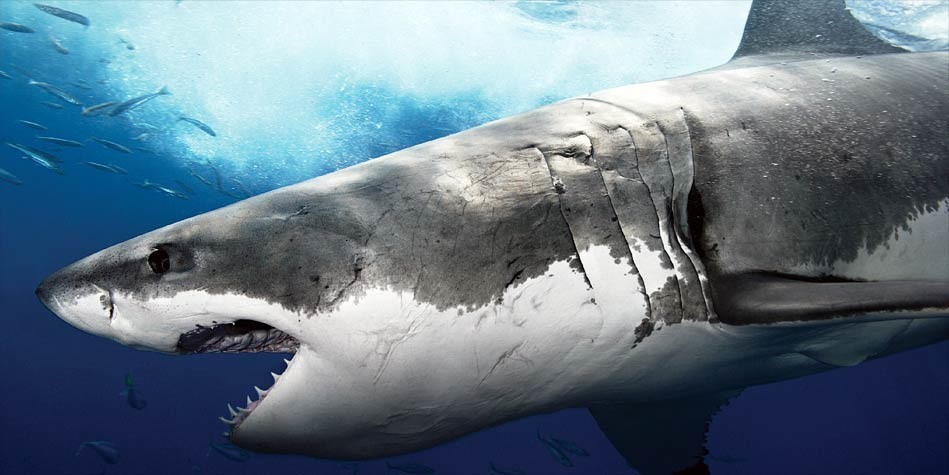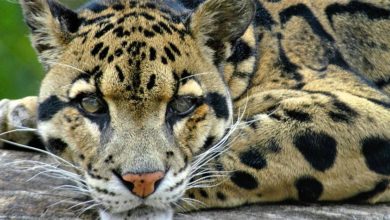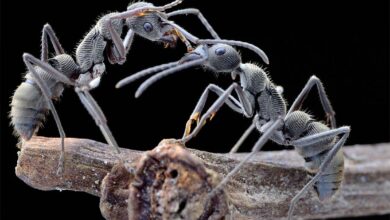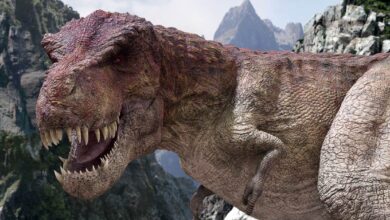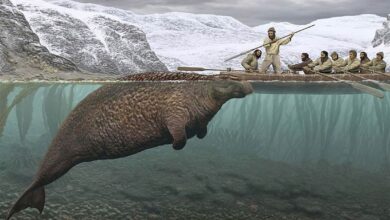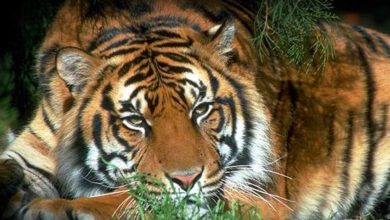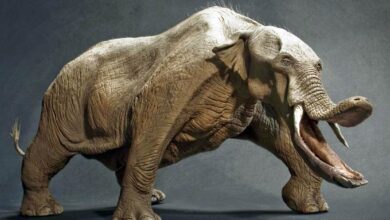The great white shark, white death, white pointer (Carcharodon carcharias) – maneater
The great white shark – a shark of the most tarnished reputation, for it was deemed to be a calculated man-eater, delighting in our blood and flesh. In fact, it is a carnivore hunting for numerous water animals, mostly seals. The huge size and the stark, sinister look of the great white shark ought to be feared and respected, but definitely not hated or despised.
Classification
- Order: Lamniformes
- Family: Lamnidae
- Genus: Carcharodon
- Species: Carcharodon carcharias
Names: Great white shark, great white, white pointer, white shark, white death.
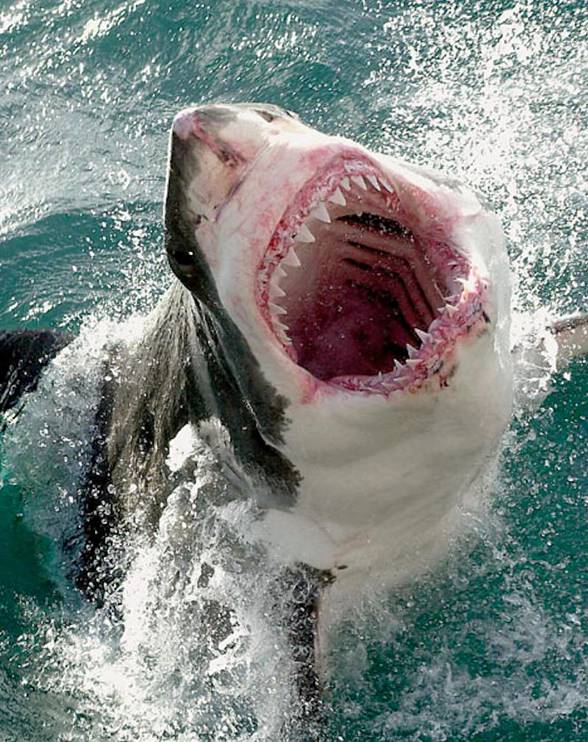
Areas of occurrence
The great white shark lives in almost all warm coastal waters and also in the open sea, in temperatures ranging from 12 to 24oC (54 to 75℉). One of the largest populations is located in the waters surrounding South Africa. Major research and observation of this giant fish are conducted there.
Many sharks inhabit the coastal areas of North America, Japan, Oceania, Chile as well as the Mediterranean Sea. It is a pelagic species, living in the surface waters (up to about 200 m (650 ft) deep) near the groups of seals, sea lions, etc. A white shark swimming ca. 1200 m (3900 ft) deep was recorded in the open ocean, which puts their fondness of shallow waters into question.
Great white sharks was also seen in the cold waters south of Australia, near the New Scotland (Canada) and Iceland.
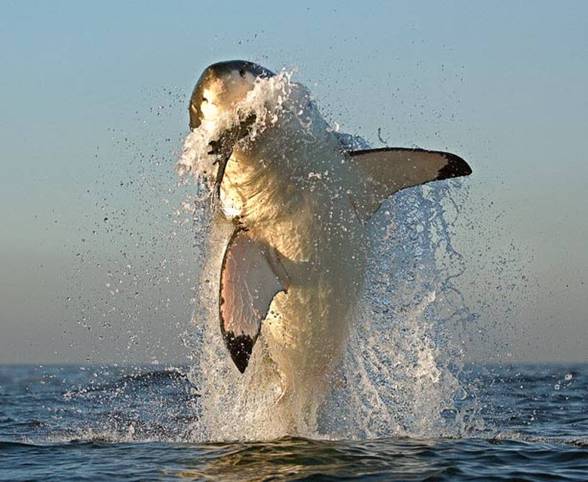
Appearance and camouflage
The spindle-shaped body, pointed snout, equipped with several lines of saw-like teeth, allowing the shark to hold its prey. As all sharks` teeth, white shark`s fallen-out teeth are replaced with new ones. Teeth grow in lines, backing each other, only the first line of teeth is used. Supposing the tooth from the first line is lost, the one from the second line takes over its role.
An attacking white shark raises its nose, extending its teeth and squeezing them into its prey. Consequently, the shark rolls over and tears a large piece of flesh (up to 70 kg). The upper part of the caudal fin is slightly bigger than the lower, the dorsal fin is triangular, tall and stiff. Small, round, black eyes are located at the sides of its head.
The bottom of its body is white or light gray, whilst its top is a darker shade of gray with a gentle touch of brown or blue color. Its coloration provides a decent camouflage, which makes the white shark invisible to its potential prey. The shark may be unnoticeable from the side, because its back’s dark color merges with the sea color even in the sunlight, while its abdomen is still of the same light color, which disrupts the image of the shark`s profile.
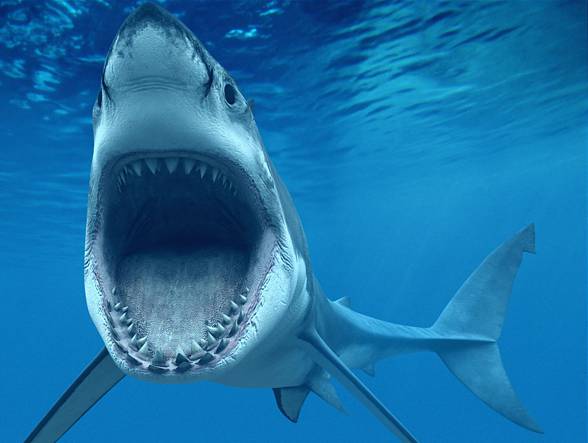
Like all other sharks, the great white shark is equipped with the ampullae of Lorenzini, allowing it to detect the electromagnetic field emitted by other animals. Its ‘radar’ is so responsive that it senses the millionth fractions of a volt (less than an electric impulse in the animals` nervous system).
Even a heartbeat generates a weak electric impulse, which is nonetheless strong enough for the white shark to notice. Most fish does not have such a well-developed ampullae of Lorenzini system, however many fish use their lateral lines (also found on a white shark`s body) with a similar purpose.
The white shark`s most vital sense is a sense of smell. Its nose has thousands of little pores and the brain area responsible for olfaction is twice as big as other parts of its brain.
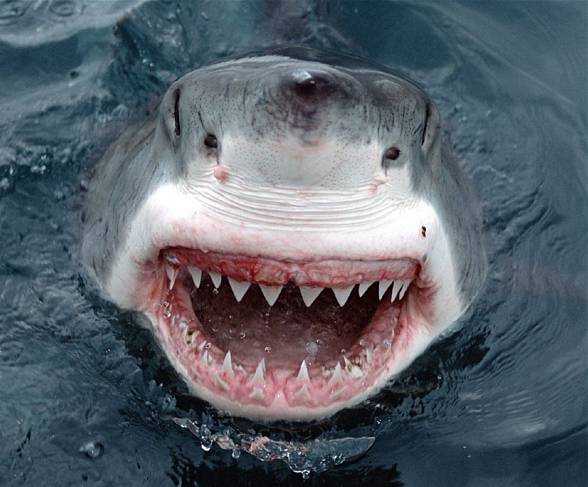
Dietary habits and hunting style
The great white shark is a carnivore. It eats seals, sea lions, sea otters, sea turtles and birds. It also sometimes happens to consume an object it cannot digest. It prefers prey with high-fat content, ergo potentially large in terms of size. Possibly that is why white sharks attack people. However, unlike seals, we are poor in fat, so we do not fit the shark`s need for a high-fat meal.
With all likelihood, a great white shark eats whenever able to, even right after a plentiful meal. After eating a large amount of meat it can refrain from eating for a few days. It has been established that it hunts mostly in the morning hours, around 2 hours after sunrise, when the visibility is limited. It hunts with a 55% success rate. Hunting in the late hours of the morning takes place extremely rarely. White shark attacks from below, from the back or side, depending on the type of the prey.
It has been observed that white shark attacks northern elephant seals (Mirounga angustirostris), severely biting their tail fins and backs to lead to their bleeding out. When the target is a porpoise or a dolphin the shark attacks from the top, below or from their back to avoid being detected by their echolocation systems.
It usually hunts solo, but it is possible for several sharks to meet in one spot, lured by the smell of the prey`s blood. The amount of consumed food depends on the size of a shark, availability of the food and water temperature. The warmer the water the bigger the shark`s appetite, for metabolism is boosted in higher temperatures. Large sharks may prove aggressive towards the smaller ones. Acts of cannibalism are not uncommon.
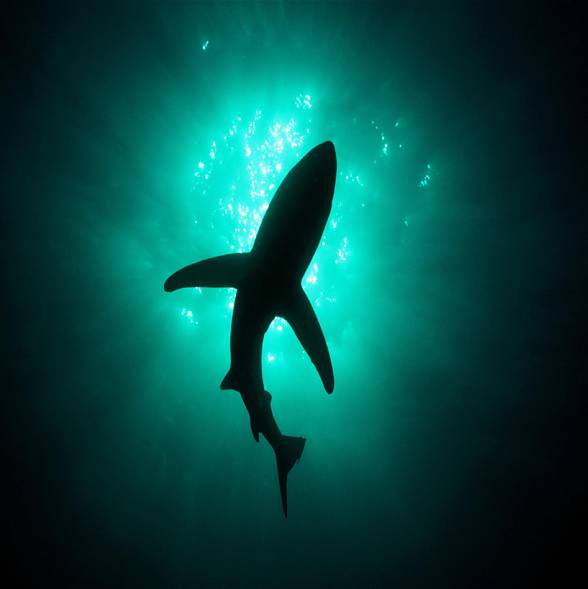
Habits: sex change
After reaching a certain size and body weight a great white shark may change its habits completely. A shark living in shallow waters leaves them to live in the depths ever after.
There is a little controversial theory – it is believed that just like Atlantic blue marlins (Makaira nigricans) and wrasses (Labridae), a great white shark can switch its sex from a male to a female after reaching certain size.
The reasons for such a process remain a mystery. Probably this is nature’s mechanism of the species’ defense, for a large and healthy animal is more likely to give birth to healthy offspring than smaller and more feeble animals. It has been established that the majority of caught great white sharks were females.

Great white shark and human concern
It is a species highly valued by sport fishing enthusiasts (mostly anglers). The sheer fact of catching such a huge fish is considered a great success. It is easily recognized at the water surface – thanks to its tall, triangular dorsal fin and a crescent-shaped tail fin. White sharks are killed purely in a recreational manner – their meat is distasteful for the shark excretes its urine directly throughout its skin, passing through the muscles beforehand.
There are many superstitions considering the white sharks in the Pacific Ocean areas. One of the beliefs claims that there is a shark described as a ‘white god’ somewhere in the ocean depths, which occasionally surfaces and reveals itself to people.
On the matter of great white shark not much is known. Any attempts to gain any substantial information usually fizzle out because these animals are rare and in constant movement.
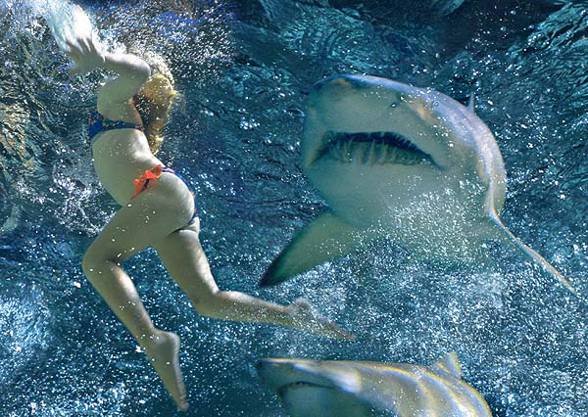
Attacks on humans
Popular culture has promoted the image of a man-eater, which passionately swallows human limbs. The best example of such an outlook is a series of films with a meaningful title ‘Jaws’, directed by Steven Spielberg. Be that as it may, we are not exactly a shark’s delicacy – for example, in the Mediterranean area 31 such attacks have been confirmed over the last 200 years, most of which have not been mortal.
Such attacks are most likely a test of the ‘edibility’ of a certain prey. The shark`s encounter with many unanimated floating objects like buoys or surfboards (which unfortunately often have humans on top) triggers the same behavioral pattern. We are not particularly tasty for carnivorous animals due to our high bone-to-muscle/fat ratio. The white shark’s food processing is slow, so we are too difficult to digest for we are too ‘bony’.
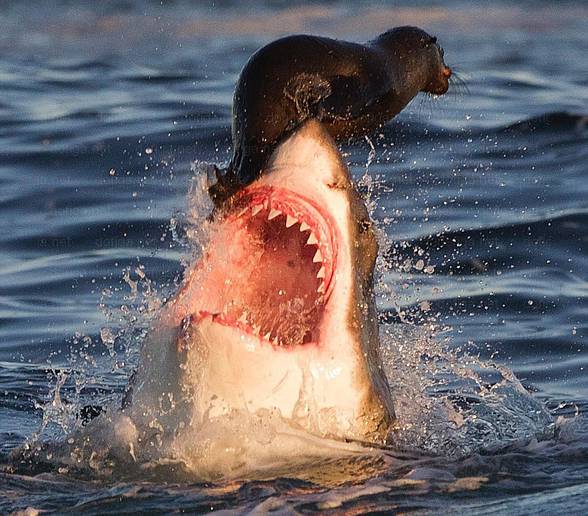
Breeding
The white sharks breeding is a great unknown. It is believed that females give birth to living baby sharks. The species is considered ovoviviparous. Oophagy occurs among the shark’s embryos – they are fed with the eggs produced by the mother’s ovary.
Baby sharks’ jaws start developing at 1 month of age. Supposedly they reach maturity around 15 years of age. Little is known about these predators’ mating season, though research on living pregnant females was performed.
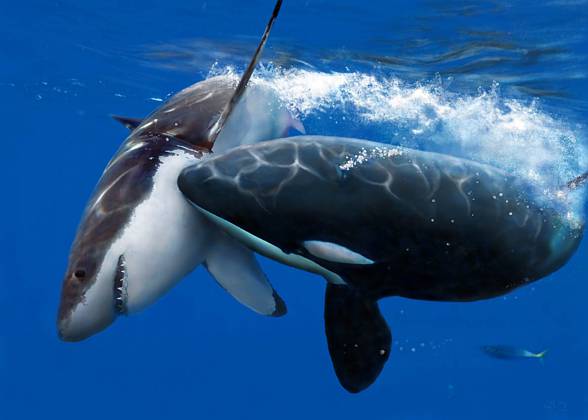
Sharks and killer whales – myths and facts
Let`s dispel a myth considering the great white shark. The great white shark is smaller and slower than a killer whale. Additionally, in case of lacking food over a certain region, killer whales can also kill sharks, including the great white sharks.
Killer whales have developed an ability to kill sharks, thoroughly observing these giant predatory fish. As it turns out, a shark flipped upside down becomes helpless (so-called tonic immobility). Sharks find it extremely difficult to return to the regular position – similar to turtles.
Killer whales take advantage of it and have developed several methods of flipping a shark over. One of them involves using their powerful tails, delivering a strong blow flipping the shark upside down.
To sum up: killer whales hunt for sharks, not the other way round.
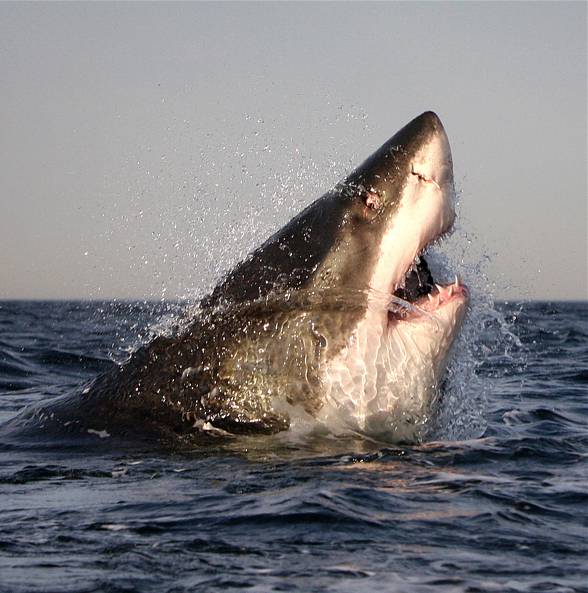
Bite force
The great white shark (Carcharodon carcharias) has the strongest jaws of all present-day animals. Its bite force is 18 000 N, which is equivalent to 1800 kg/cm2. The second rank belongs to the saltwater crocodile, which reaches even 1100 kg/cm2 of bite pressure. Relatively – human bite pressure is only 73 kg/cm2.
More information regarding the bite force of various animals can be found soon in new articles.
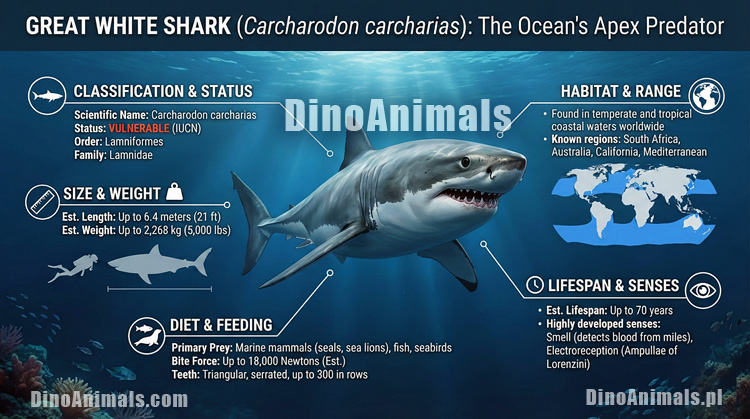
Megalodon – the ancestor of the great white shark
Megalodon (Carcharodon megalodon / Carcharocles megalodon) is a prehistoric shark that inhabited the earth 28-1.5 million years ago – during the Oligocene, Miocene, Pliocene and Pleistocene. It was ‘slightly’ bigger than today’s sharks – its length is estimated to be 16-20 meters (52 – 65ft) and its weight (depending on its length) is predicted to be from 48 to 103 tons. Megalodon’s teeth were up to 18 centimeters (7 in) long and the estimated bite force exceeded 2.4 ton/cm2.
According to current scientific classification, the megalodon is a progenitor of the great white shark.
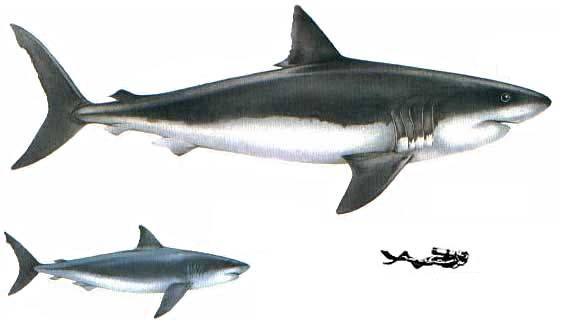
Detailed characteristic / size
Great white shark (Carcharodon carcharias)
- Length:
- males: 3.5 – 4 m (11ft 6in – 13ft 1in)
- females: 4.5 – 5 m (14ft 9in – 16ft 5in), confirmed record is 6.02 m (24ft 3in), unconfirmed claim it to be about 12 m (39ft 4in)
- Weight: 680 – 1,100 kg (1,500 – 2,425lb), the heaviest recorded shark weighed 1,208 kg (2,663 lb), though rumors of white sharks reaching 2,530 kg (5 580lb) exist
- Speed: up to 50 km/h (31 mph)
- Lifespan: estimated to be around 70 years

Great white shark – interesting facts
- The great white shark is not the largest. This title belongs to the whale shark.
- White sharks can distinguish different colors. It is mostly agitated by yellow colors, while practically indifferent towards black color.
- It is capable of detecting the scent of 1 drop of blood in 5 000 000 drops of water from 1.5 km (ca. 1 mi).
- It reacts to nervousness and elevated heartbeat, sensing the changes of the pulse.
- The largest sharks can bite with a pressure of almost 2 tons per cm2.
- The white shark does not have a swim bladder so – in order to ensure sufficient oxygen supply – it must constantly swim at the speed of around 3.5 km/h (2.2 mph) day and night
- A shark held in one place or pulled back begins to sink.
- Females are dominant over males, larger sharks dominate over smaller ones, and the local animals are higher in the hierarchy than newcomers.
- It is one of the few shark species, which regularly draws its head above the water to observe other animals or objects. It can also be explained by improved scent detection, for air is a better conductor of smells than water.
- It is likely that sharks gather up to form clans, similar to wolf packs, which assign a certain task to every member. When members of different clans meet, they create a hierarchy without the use of violence.

Recommended
- Marine
- Sharks – myths and facts
- Megalodon
- Whale shark – largest fish
- Longest whales
- Heaviest whales
- Largest sharks
- Extinct animals
- Animal fights
- American lion
- European cave lion
- Smilodon – Saber-toothed tiger
- Fastest animals
- Fastest birds

